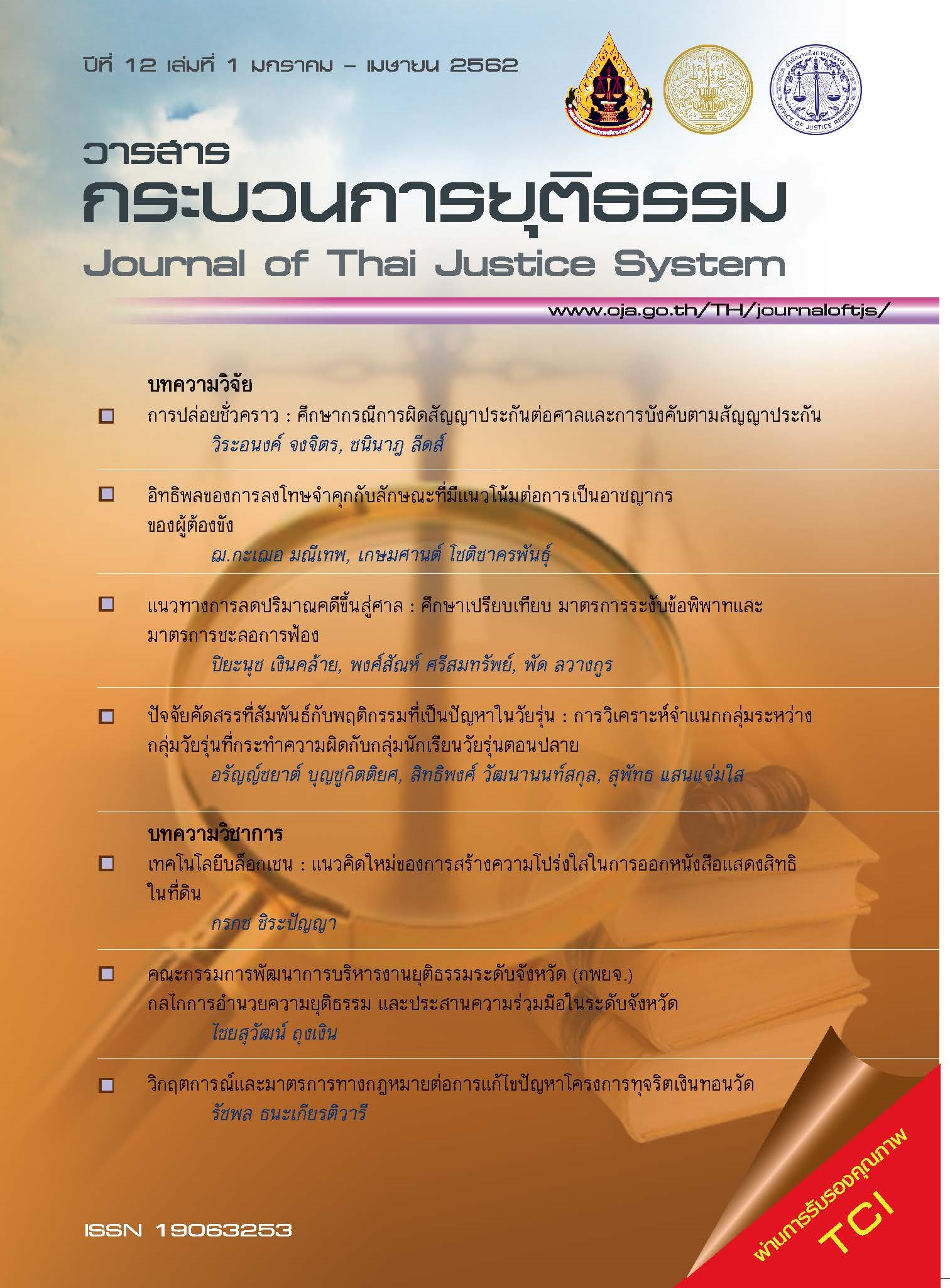The Crisis and Legal Measure for the Corruption in Thai Buddhist Temple
Main Article Content
Abstract
The article focuses on the crisis of Corruption in Thai Buddhist temple, which the state budget is disbursed to support the temple in religious operations with the purpose 1. Restoration 2. Propagation for carry out the religious activities 3. For the study of Buddhist Scriptures but there is a corruption by a staff within the Bureau of Buddhism that let the temple drafts the subsidy budget which increase in ratio of 1:3 or 25 percent. The staff acquires 75 percent of the difference. Then submit the budget request to National Office of Buddhism. When the request is approved, the temple will have to withdraw 75 percent of the money to the staff. Therefore, it caused corruption in this project. In addition, takes Legal measures to supervise the temples and conduct the management of the temple financial accounting report to the temple to have effective financial management, transparency, and be able to inspect and to prevent the gap that is conducive to corruption.
In this study, documentary research whereby the author of this research has studied and analyzed data form the Act on The Sangha Act B.E.2505, newspapers, theses, journal articles, and research reports. In so doing, the author describes and qualitatively analyzed the data collected.
Article Details
Published Manuscripts are the copyright of the Journal of the Justice System. However; the opinions that appeared in the content are the sole responsibility of the author.
References
กองพุทธศาสนสถาน. (2561). สำนักงานศาสนสมบัติ. สำนักงานพระพุทธศาสนาแห่งชาติ. ค้นจาก http://www.bmd.onab.go.th
ฉลอง ช่วยธานี. (2555). มาตรการทางกฎหมายในการบริหารจัดการศาสนสมบัติวัดและศาสนสมบัติกลาง. (วิทยานิพนธ์ปริญญามหาบัณฑิต). มหาวิทยาลัยมหาจุฬาลงกรณราชวิทยาลัย, กรุงเทพฯ.
ณดา จันทร์สม. (2555). รายงานฉบับสมบูรณ์โครงการวิจัย การบริหารการเงินของวัดในประเทศไทย. กรุงเทพ ฯ: สำนักพิมพ์สถาบันบัณฑิตพัฒนบริหารศาสตร์.
ไทยรัฐ. (2560). แฉทุจริต "เงินวัด" บิ๊ก พศ. อาจมีเอี่ยว | ถามตรงๆกับจอมขวัญ. ค้นจาก https://www.youtube.com/watch?v=-wo-Ws4X4VE
ผู้จัดการออนไลน์. (2561). เปิดตัวอย่าง “รูปแบบบัญชีวัด” แบบใหม่ ฉบับ ก.พ.ร.หลัง มส.ไฟเขียว 6 บัญชี “เงินรายวัน-เงินฝาก-รายรับ-รายจ่าย-งบประจำปี-รายงานประจำปี. ค้นจาก https://mgronline.com/politics/detail/9600000103668
ประมวลกฎหมายแพ่งและพาณิชย์ พ.ศ. 2535. (แก้ไขเพิ่มเติม พ.ศ. 2560). ราชกิจจานุเบกษา, 134(ตอนพิเศษ 97ง ), 49/4.
พรชัย ขันตี. (2553). ทฤษฎีอาชญาวิทยา: หลักการ งานวิจัย และนโยบายประยุกต์. กรุงเทพฯ: สุเนตร์ฟิล์ม.
พระราชบัญญัติคณะสงฆ์ พ.ศ. 2505. (2505). ราชกิจจานุเบกษา, 79(ตอนที่ 115/ฉบับพิเศษ), 29-44.
เรืองฤทธิ์ ประสันรักษ์. (2540). รายรับรายจ่ายของวัดในกรุงเทพมหานคร. วารสารพุทธศาสน์ศึกษาจุฬาลงกรณ์มหาวิทยาลัย, 4(2), 43-45.
สำนักพระพุทธศาสนาแห่งชาติ. (2558). คู่มือพระสังฆาธิการ (พิมพ์ครั้งที่2). กรุงเทพฯ: สถาบันพระสังฆาธิการ สำนักงานพระพุทธศาสนาแห่งชาติ.
ศุภชัย ยาวะประภาษ. (2552). นโยบายสาธารณะ (พิมพ์ครั้งที่ 8). กรุงเทพฯ: สำนักพิมพ์แห่งจุฬาลงกรณ์มหาวิทยาลัย


